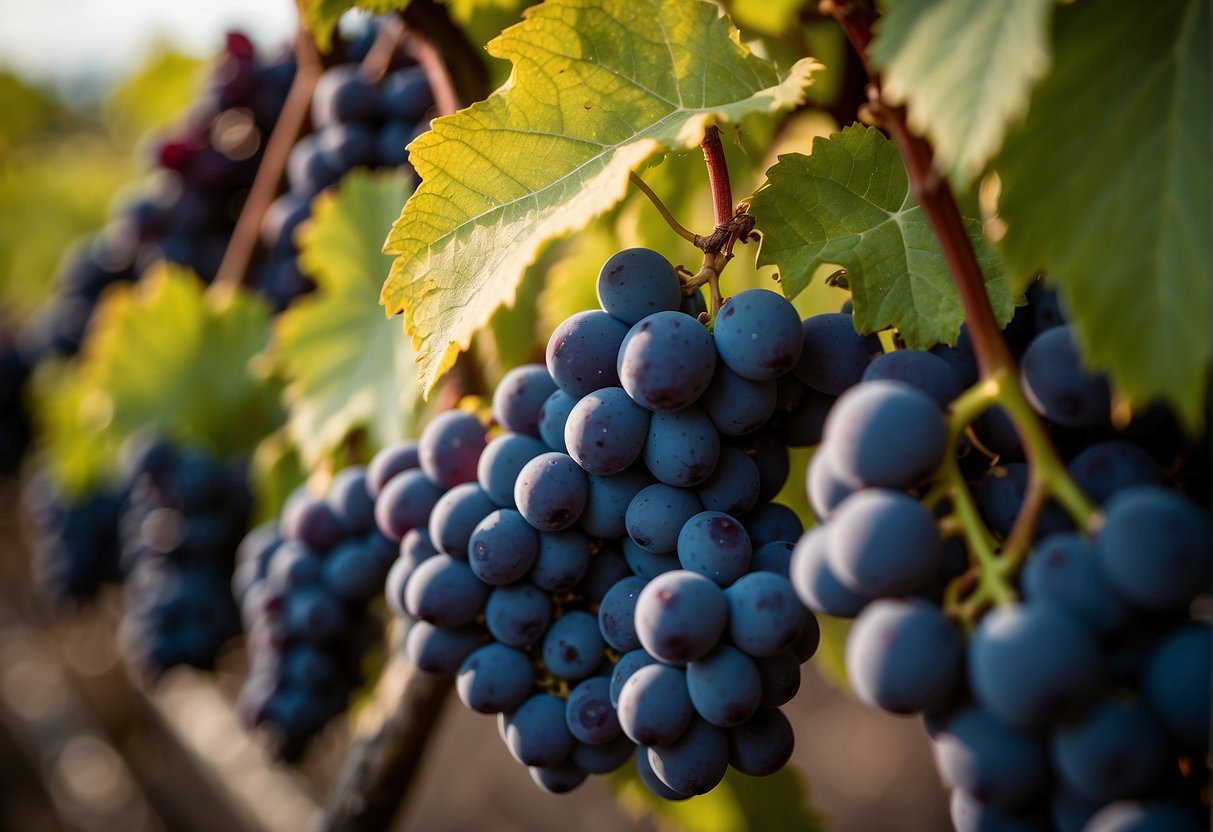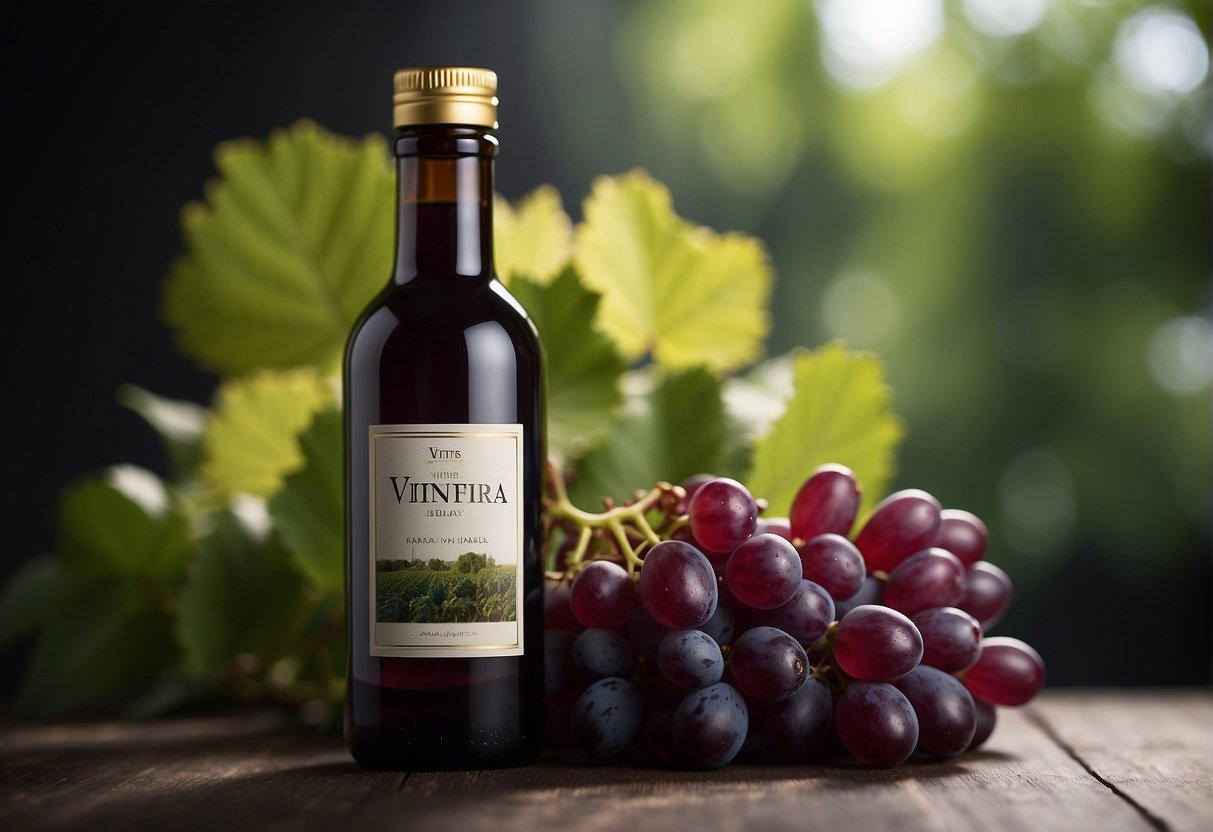Is Vitis Vinifera Halal? Understanding the Permissibility in Islamic Dietary Laws
Determining whether Vitis vinifera, commonly known as the grapevine, is halal is essential for those following Islamic dietary laws. Halal, meaning permissible in Arabic, is a key concept in Islam that dictates what adherents can consume. As a noteworthy plant mentioned in the Qur'an, grapes from Vitis vinifera have a special status; they are inherently halal, but their permissibility is contingent on how they are cultivated, processed, and consumed.

Grapevines are widely cultivated across the world and have a variety of applications, most famously in wine production. However, wine and other intoxicants are explicitly prohibited in Islam. As a result, while the grape itself and its non-alcoholic derivatives, like grape juice and vinegar (provided the vinegar is produced through a permissible process), are considered halal, products that involve fermentation to produce alcohol are not. In addition to dietary concerns, the grapevine also holds significance due to its health benefits, as it contains nutrients and compounds that can aid in managing health conditions like hyperlipidemia.
Key Takeaways
- Grapes from Vitis vinifera are halal unless processed into prohibited products like alcohol.
- The permissibility of Vitis vinifera products in Islam depends on cultivation, processing, and final usage.
- The grapevine is significant both as a halal food source and for its potential health benefits.
Vitis Vinifera Overview

In this section, we explore the historical significance and taxonomy of Vitis vinifera, commonly known as grapevine. Renowned for its fruit, the grape, Vitis vinifera has been integral to cultures worldwide through its domestication and use in viticulture.
Historical Significance
Vitis vinifera has a storied past that intertwines with human civilization. Domestication of the grapevine is believed to have occurred as early as 6,000-8,000 years ago in the Near East. Its cultivation spread to Egypt and Phoenicia, ultimately reaching Greece, Rome, and further into Europe. Vitis vinifera provided not only sustenance in the form of fruits but also had cultural and economic importance due to its transformation into wine.
Taxonomy and Classification
Family: Vitaceae
Genus: Vitis
Species: Vitis vinifera
Vitis vinifera is the most widely cultivated grape species and is classified under the family Vitaceae. The genus Vitis comprises many species, including both wild grapes and domesticated ones. However, Vitis vinifera is distinct for its extensive use in the global wine industry and is arguably the most significant in terms of cultural impact and economic value. Through careful breeding and selection, numerous cultivars have been produced, each with unique characteristics and adaptations.
Cultivation and Distribution

Vitis vinifera, commonly known as the common grape vine, represents one of the most widely cultivated fruits globally, prized for its uses in wine production, fresh consumption, and culinary applications. Our focus on "Cultivation and Distribution" explores the breadth of Vitis vinifera growth and the rich tapestry of its varietal diversity.
Global Cultivation
The cultivation of Vitis vinifera spans across various continents, from the traditional vineyards of Europe to the expanding production in Asia and North America. Italy, France, and Spain stand as the principal cultivators, leveraging their long-standing viticultural expertise to produce a significant portion of the world's wine. In Asia, cultivation efforts have been on a steady rise, reflecting growing market demands and the adaptation of viticulture practices to regional climates.
Varietal Diversity
Our examination of varietal diversity showcases the profound selection of Vitis vinifera cultivars, each contributing unique characteristics to the vineyards. Indicative evidence of this diversity is seen across several regions:
- Italy: Renowned for classics like Sangiovese and Nebbiolo
- France: Home to world-famous varieties such as Merlot and Chardonnay
- Spain: Cultivator of Tempranillo and Garnacha, among others
In terms of distribution, these cultivars have found their way onto different continents, taking root in the soils of North America and flourishing across regions in Asia. This widespread distribution is a testament to the adaptability and the universal appeal of Vitis vinifera.
Cultural and Religious Considerations

In addressing whether Vitis vinifera, commonly known as the grapevine, is halal, we must consider its use within various cultural and religious frameworks. Our focus will primarily be on halal compliance and the significance of alcohol in religious contexts.
Halal Compliance
Grapes themselves are a permissible (halal) food in Islam as they are a naturally occurring fruit. The concern for halal compliance arises in the context of fermentation, where grapes can be converted into wine or other alcohols. Scholars in Islamic jurisprudence have deliberated extensively on the transformation of halal substances into haram (forbidden) products through processing methods. The Quran explicitly prohibits intoxication, and therefore, any grape product that causes intoxication is not halal.
- Permissible in natural form: Grapes (Vitis vinifera)
- Prohibited when intoxicating: Wine and similar products
Alcohol in Religions
Alcohol holds varying positions in religious traditions. In Islam, particularly in the Middle East, consuming alcohol is largely prohibited due to its intoxicating effects. The concept of halal in Islam does not merely dictate dietary laws but embodies a comprehensive lifestyle, ensuring the well-being of the body, mind, and spirit. Other religions have different views on alcohol consumption. For example, in Christianity, wine is used in religious ceremonies, symbolizing the blood of Christ, while in certain branches of Buddhism, alcohol is discouraged due to its potential to hinder one's mindfulness and spiritual progress.
- Islam: Consumption is prohibited as it leads to intoxication.
- Christianity: Utilized in religious practices.
- Buddhism: Discouraged due to its mind-altering effects.
By considering these aspects, we gain a better understanding of the nuances involved in determining the halal status of Vitis vinifera and its derivatives across cultures and religions.
Health Benefits and Uses

Vitis vinifera, commonly known as the grape vine, offers an array of health benefits due to its rich nutritional profile and its medicinal applications throughout history.
Nutritional Composition
Our research highlights that Vitis vinifera contains an abundance of polyphenols, which are potent antioxidants. The fruit is also rich in proanthocyanidins, known for their cardiovascular benefits. Specifically, grape seed oil, which is extracted from the seeds of Vitis vinifera, is a valuable source of these compounds. It exhibits a high concentration of unsaturated fatty acids, which can help in the management of cholesterol levels.
Medicinal Applications
Medicinally, Vitis vinifera has been employed across various cultures. We recognize that its usage is deeply rooted in historical treatments, particularly for cardiovascular health due to its potential to lower bad cholesterol levels. Furthermore, the polyphenols and proanthocyanidins in Vitis vinifera contribute to its powerful antioxidant properties, which can play a role in preventing chronic diseases.
Wine Production and Characteristics

In this section, we delve into the technicalities of the winemaking process and the characteristics of different varieties of wine. Our focus centers on the methodology applied by winemakers and the distinctions among popular wine types such as Chardonnay, Pinot Noir, and Cabernet Sauvignon.
Vinification Process
The vinification process, better known as winemaking, begins with the selection of Vitis vinifera, the common grape vine. Harvesting is the first critical step, where the timing is crucial to ensure desired sugar, acidity, and flavor profiles. The grapes then undergo crushing and pressing to extract juice. For red wine, the skins are kept in contact with the juice during fermentation to impart color and flavor, a step not required for Chardonnay and other white wines. After fermentation, the wine is clarified and then aged in barrels or tanks before bottling.
Wine Varieties
We differentiate wine into a spectrum of varieties based on the grape type, region, and winemaking techniques. Chardonnay is a white wine known for its wide range of flavors from apple and lemon to tropical fruit, heavily influenced by terroir and oak aging. Pinot Noir is a lighter red wine with notes of cherry and raspberry but can be challenging to cultivate. On the other hand, Cabernet Sauvignon is a robust red wine, with bold tannins and a profile rich in dark fruits, making it one of the most revered and widely planted wine grapes in the world.
Frequently Asked Questions

In this section, we answer common queries regarding the consumption of Vitis vinifera, commonly known as the grapevine, under Islamic dietary laws, which emphasize halal principles.
Can Muslims consume grape juice as a halal option?
Yes, Muslims can consume grape juice, as long as it is not fermented and does not contain alcohol, making it a halal option.
Is consuming fruits from the vine permissible in Islam?
Consuming fruits from the vine, such as grapes from Vitis vinifera species, is permissible and halal in Islam. These fruits are considered pure and lawful to eat.
What does the Quran say about the consumption of wine?
The Quran explicitly prohibits the consumption of wine or any intoxicants, as they are considered haram, which means forbidden in Islam.
Are extracts derived from red wine considered halal or haram?
Extracts derived from red wine are generally considered haram if they contain alcohol. However, if the alcohol is completely removed and the extract is free from any intoxicating effects, it may be considered halal by some scholars.
Can red wine be consumed in any form within Islamic dietary laws?
No form of red wine that contains alcohol can be consumed under Islamic dietary laws, as alcohol is categorically haram in Islam.
Does the use of Rescue Remedy align with halal dietary guidelines?
Rescue Remedy, a Bach flower remedy, contains alcohol and thus does not align with halal dietary guidelines. Only alcohol-free versions of such remedies would be considered halal.